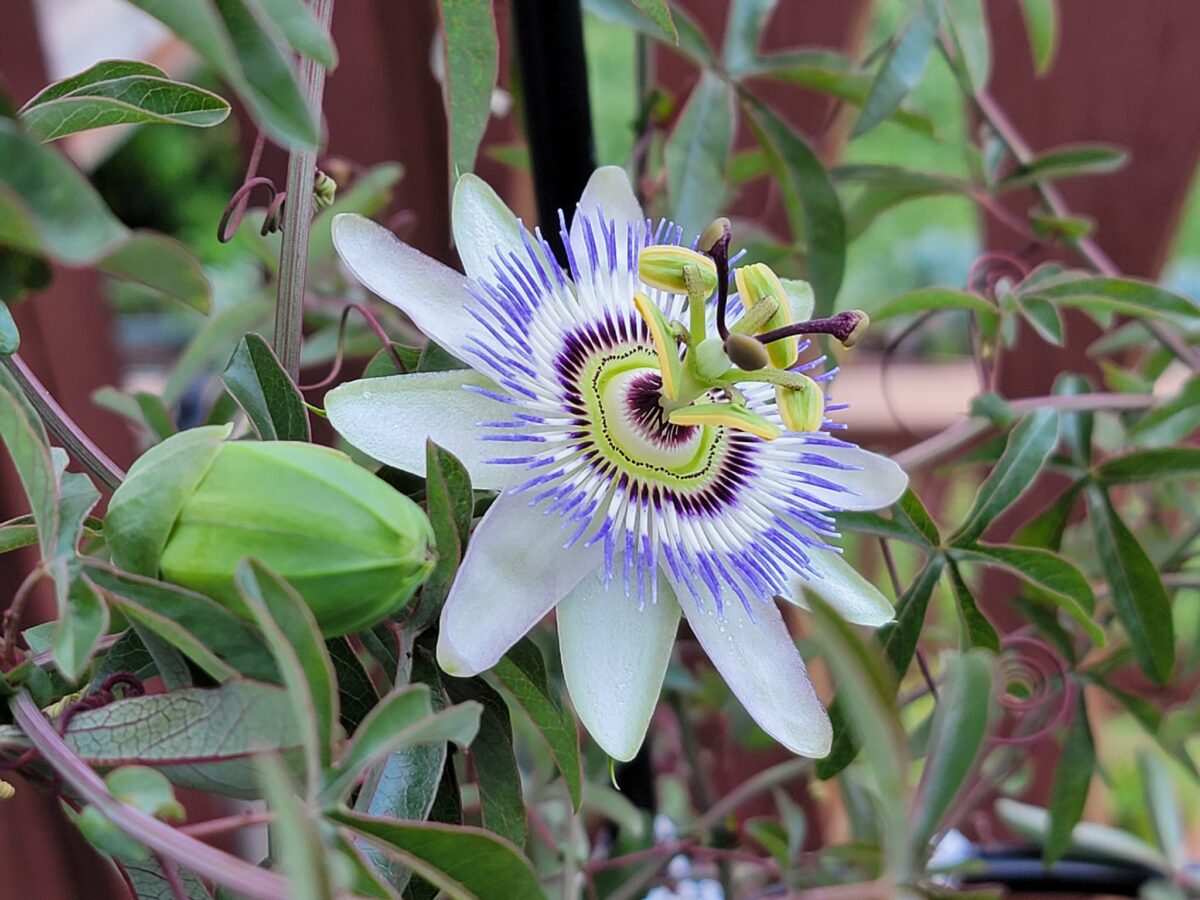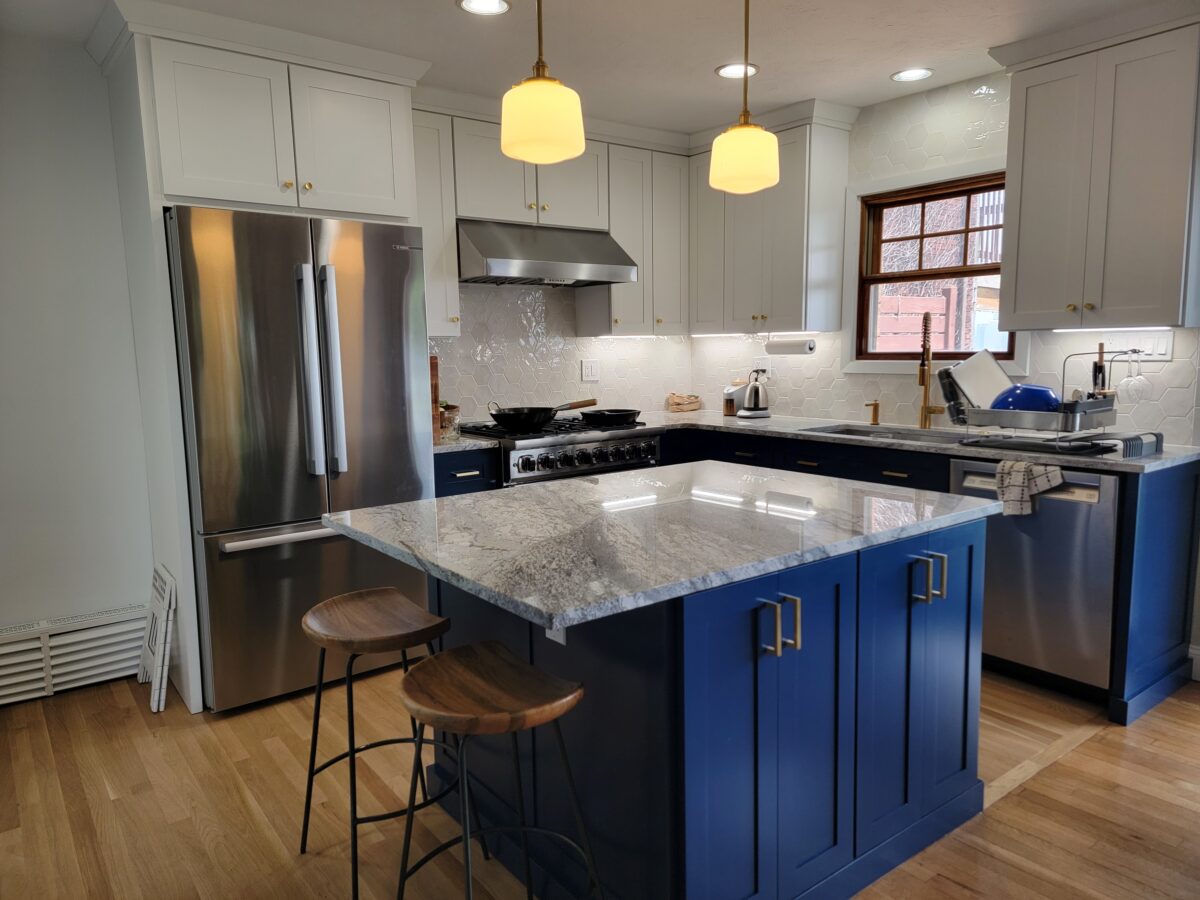Disclaimers: Our site uses demographic data, email opt-ins, display advertising, and affiliate links. Please check out our Terms and Conditions for more information.
We founded Hipster Homesteaders in late 2021 to chronicle our somewhat different approach to urban homesteading on our ~0.13 acre lot in Pittsburgh.
Our goal here is not to be 100% self-reliant on food grown in our yard, but rather to maximize our urban gardening as best we can while supplementing it with local produce (via CSAs), local meats (via area farmers), and cutting out intermediaries when supporting other non-local businesses (such as buying seafood direct from fishermen in Alaska over factory farmed products in the grocery store).
Now that we are winding down our second proper season after launching this site, we thought we'd review everything we have added to our homestead in the past year!
What We Started Year Two With
Our project began year two with the following:
- Container gardens on our deck for tomatoes, herbs, peppers, and cucumbers
- A raised bed planter on the side of our house for root vegetables and/or greens
- Our total gardening space was approximately 50 sq ft
- Five fig trees, one peach tree, one cherry tree, five grape vines, ~100 ramp bulbs, 10 black raspberry vines, fifty or so strawberry plants, two blueberry bushes, one kiwi vine, three paw paw trees, one unknown tree (likely an apricot), a key lime tree (container), a Meyer lemon tree (container), and a passionfruit vine
- Two bee hives
- A composter and rain barrel
- Kitchen tech like sous vide, coffee roasting equipment, a dehydrator, and pressure and water bath canning equipment
- Indoor grow light tower to start seeds
What Has Changed in Year Two
Our second year of getting into homesteading showcased some of the challenges that we face with growing plants and expanding- namely how fighting with weeds, dealing with deer and raccoons, overall plant survival and dieback, and balancing the time of it all is indeed quite the challenge.
Due to a deep freeze around Christmas, and of course, the numerous critters on our hillside, many of our plants met an untimely death this year. We lost at least two grape vines, a fig tree, a paw paw tree (possibly a second, too- we'll see next year), the apricot tree, and likely the blueberry bushes for one or more of these reasons. As we were fighting this, we put up better fencing around our fruit trees to help protect the rest which seems to be working well enough.
Thankfully, I had many cuttings of other grape vines, fig trees, and others in our refrigerator that made their way through the winter without issue, and these were rooted and planted in place of the trees that died.
I got lucky in finding more plants to put underneath our deck on trellising, including another kiwi plant, which is growing relatively slowly, and three maypop plants (North American passion flower) which are expanding at an incredible pace- producing fruit but not ripening in time this season. I attempted to plant lingonberry plants, but I think our zone 6b is too warm for them, and they did not make it.
Likewise, on the tropical fruit side we added a blood orange tree that was doing remarkably well and produced two fruits in its first year here. We also harvested our first key limes and got passionfruit flowers which did not seem to successfully pollinate. Towards the end of the year we also bought a dragonfruit cactus, a kumquat tree, and a lychee tree for good measure- these seem to be doing okay inside for the time being, although we are struggling with the lychee tree a bit with fertilization leaf burn.
We also planted four hops rhizomes to try and grow vines up our deck; however, three did not survive after planting and need to be replaced. Thankfully, the company we used for the three that did not make it issued me a credit to buy more next spring. Another fun plant was we acquired four rose bushes from friends who uprooted them and successfully replanted and save three. Rosehip jam incoming in a future season!
Our bee hive expansion went from two hives to four; however, due to extreme heat, poor timing of rains, and two queen deaths (one hive seemingly recovered), we have not had an appreciable harvest yet- only 2 1/2 lbs this year. That said, as it generally takes 2-3 years for bee hives to get fully established, we hope things will change soon. All of the deeps are fully drawn out so we should be ready to go for year three!
We underwent a significant kitchen renovation during the year as well, finally completing a fully customized renovation that also included a dry bar space we have been saving for and dreaming of for years. This ate most of our cash liquidity that we had otherwise been putting into plants and other tech expansion, which pushed some other projects we're dreaming of to the future.
Overall, although the garden and beekeeping side of our homesteading goals were a bit unremarkable this year, we are pleased to have our kitchen finally renovated and be close to capacity for some of our major plantings that need time to start producing. On that end, now we wait!
A Running Inventory of Our Homestead to Date
To date, our homestead has the following plants and other food-producing items. Some of these are producing fruit, and others are still growing for future production:
- Container Garden: 50 square feet
- Four (4) beehives
- One (1) Meyer Lemon tree (container)
- One (1) Key Lime tree (container)
- One (1) Passionfruit vine (container)
- One (1) Blood Orange tree (container)
- One (1) Kumquat tree (container)
- One (1) Lychee tree (container)
- One (1) Dragonfruit cactus (container)
- Three (3) Maypop vines
- Seven (7) Fig trees
- Two (2) Pawpaw trees
- One (1) Cherry tree
- One (1) Hops vine
- Four (4) Grape vines
- One (1) Peach tree
- ~One Hundred (100) ramp bulbs
- ~Fifty (50) Strawberry plants
- One (1) Blackberry vine
- Ten (10) Raspberry vines
- Thirty (30) Black Raspberry vines
- One (1) Blueberry bush – we're not sure if this one will survive
- Two (2) Kiwi vines
- Three (3) Rose bushes
What We Hope to Achieve in Year Three
Now that our kitchen has been renovated and our budget has freed up a bit, we have a few goals we hope to hit in year three:
- I am looking to expand our tropical fruit tree collection in our container garden to add possible plants like a mango and guava tree. I am running out of room inside during the winter, so unless we build a greenhouse, we're coming close to our max there.
- We will likely start building a few more in-ground planters at the base of our deck to get into planting things like garlic, potatoes, melons, and others that we were not as successful with in the past.
- A few more in-ground fruit producers like cold tolerant prickly pear cacti, a persimmon tree, and a pomegranate tree. This will likely take us to our max until we can terrace our hillside in the (hopefully) not-so-distant future.
- Increasing our fermentation production with more kiokes and other fermentation vessels, and getting six month, 12 month, and longer ferments set up in our new found space.
- Acquiring more kitchen tech and serving plates and bowls for other fun foods.
- If we are able to have an appreciable honey harvest, we also hope to get into barrel-aging honey, making mead, and figuring out fun uses of the excess.
Phew. That is a lot, but we are excited to see where we go form here!
What do you think we should add to our homestead in year three? Comment below to share!





